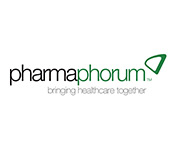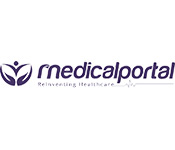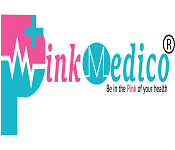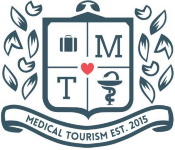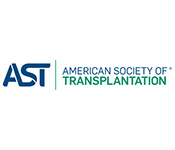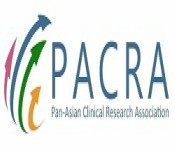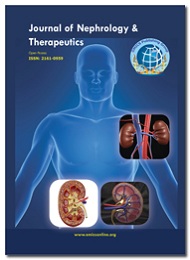Theme: New Advances in Treatment/Prevention in the field of Nephrology and Hypertension
Nephrologists Congress 2019
Join us for 15th International Conference on Nephrology and Hypertension
Update your skills, enhance your knowledge base, and broaden your horizons—all in one place!
Nephrology, Nephrologists, Hypertension, Healthcare, Human Metabolism, Endocrinology, Kidney Disorders, Urology, Clinical Nephrology, Pediatric Nephrology, Kidney Cancer, Haemodialysis
Date: November 11-12, 2019
Venue: Istanbul, Turkey
Nephrology Conferences regards each one of the individuals to go to the "Nephrologists Congress 2019" amidst November 11-12, 2019 at Istanbul, Turkey which melds brief keynote presentations, speaker talks, Exhibition, Symposia, and Workshops. Nephrologists Congress 2019 has been designed to extensively explore a variety of scientific and clinical aspects of hypertension & Kidney disease throughout the lifespan, and throughout the spectrum of kidney disease.
Nephrologists Congress 2019 will be an international event focusing on the core knowledge and major advances in the ever-expanding field of Nephrology & Hypertension by attracting experts on a global scale. This year, we also hope to bring together experiences from different countries and exchange their views, reinforce knowledge base, and learn new concepts.
With the participation of outstanding international experts, we hope productive discussions would stimulate new creative ideas to translate new discoveries into better diagnosis and treatment of Renal Diseases. We sincerely invite you to join us in this very informative annual conference and collaborate in the global action in reducing the burden of Hypertension & Renal Diseases. Your presence will certainly add value to the conference and very much appreciated!
2019 Highlights:
- 4+ Keynote Speakers
- 25+ Plenary Speakers
- 3+ Exhibitors
- 17 Innovative Educational Sessions
- 3+ Workshops
- B2B Meetings
Why to attend???
With members from around the world focused on learning about nephrology and its advances; this is your best opportunity to reach the largest assemblage of participants from the nephrology community. Conduct presentations, distribute information, meet with current and potential scientists, make a splash with new drug developments, and receive name recognition at this 2-day event. World-renowned speakers, the most recent techniques, developments, and the newest updates in nephrology are hallmarks of this conference.
Target Audience:
- Nephrologists
- Nephrology Scientists
- Heads, Deans and Professors of Nephrology & Cardiology departments
- Scientists and Researchers organizers
- Doctors
- Medical Colleges
- Healthcare professionals
- Founders and Employees of the related companies
- Clinical investigators
- Hospitals and Health Services
- Pharmaceutical companies
- Laboratory members
- Training institutions
- Support organizers
- Data Management Companies
- Nephrologists training and education
- Nurse and nursing education institutions
15th International Conference on Nephrology and Hypertension
November 11-12, 2019 Istanbul, Turkey
It is a great pleasure and honour for us to invites all the participants from all over the world on behalf of the organizing committee of Nephrologists Congress 2019 to attend at 15th International Conference on Nephrology and Hypertension during November11-12, 2019, which will be held at Istanbul, Turkey.
Track 01:Renal Nutrition & Metabolism
Renal hypertension which is also called renovascular hypertension, is blood pressure caused by renal diseases. It can as a rule be controlled by some medications.
People with renal hypertension can be helped by angioplasty, stenting or surgery on the blood vessels of the kidney. A few people with renal hypertension can benefit from outside intervention by stenting, angioplasty, or surgery on the veins of the kidney.Renovascular hypertension is hypertension because of narrowing of the arteries that convey blood to the kidneys. This condition is likewise called renal artery stenosis. The most well-known reason for renal vein stenosis is a blockage in the supply routes because of elevated cholesterol. This happens when a sticky, greasy substance rang plaque expands on the internal covering of the arteries, causing a condition known as atherosclerosis. At the point when the courses that convey blood to your kidneys wind up plainly restricted, less blood streams to the kidneys. The kidneys react as though your circulatory strain is low. Therefore, they discharge hormones that advise the body to clutch more salt and water. This causes your circulatory stream to rise.
Track 02: Clinical Nephrology
Clinical nephrology includes restorative treatment of renal diseases and conditions. This may involve working with different regions of the body that likewise are affected by the kidneys. Kidney issues may cause electrolyte imbalances in the circulatory system, bringing about intense side effects incorporating overabundance liquid in the tissues, mental confusion, irregular heartbeat. Clinical nephrology additionally can help patients who have hypertension, since hypertension can be damaging to the kidneys.
Patients who are in kidney failure as a result of damaged kidneys need dialysis to perform the functions the kidneys no longer can. A patient suffering with renal failure may need a kidney transplant. Clinical nephrology manages the process of dialysis, which is a system of removing waste blood from the body, cleaning the blood. Most people have two kidneys but can survive with only one as long as it's healthy.
Track 03: Renal Hypertension
Renal hypertension which is also called renovascular hypertension, is blood pressure caused by renal diseases. It can as a rule be controlled by some medications.
People with renal hypertension can be helped by angioplasty, stenting or surgery on the blood vessels of the kidney. A few people with renal hypertension can benefit from outside intervention by stenting, angioplasty, or surgery on the veins of the kidney.
Renovascular hypertension is hypertension because of narrowing of the arteries that convey blood to the kidneys. This condition is likewise called renal artery stenosis. The most well-known reason for renal vein stenosis is a blockage in the supply routes because of elevated cholesterol. This happens when a sticky, greasy substance rang plaque expands on the internal covering of the arteries, causing a condition known as atherosclerosis. At the point when the courses that convey blood to your kidneys wind up plainly restricted, less blood streams to the kidneys. The kidneys react as though your circulatory strain is low. Therefore, they discharge hormones that advise the body to clutch more salt and water. This causes your circulatory stream to rise.
Track 04: Hypertension and Transplantation Medicine
Hypertension after renal transplantation is a strong predictor of patient and graft survival. In transplant recipients, hypertension is usually defined as blood pressure >140/90 mmHg or likewise if a patient is treated with antihypertensive drugs. Cardiovascular mortality and morbidity and shortened allograft survival are important consequences of inadequate control of hypertension. Hypertension in renal transplant recipients is common and ranges from 50% to 80% in adult recipients and from 47% to 82% in pediatric recipients.
Donor and recipient factors, acute and chronic allograft injury, and immunosuppressive medications may each explain some of the pathophysiology of post-transplant hypertension. As observed in other patient cohorts, renal artery stenosis and adrenal causes of hypertension may be important contributing factors. Notably, BP treatment goals for renal transplant recipients remain an enigma because there are no adequate randomized controlled trials to support a benefit from targeting lower BP levels on graft and patient survival. The potential for drug-drug interactions and altered pharmacokinetics and pharmacodynamics of the different antihypertensive medications need to be carefully considered.
To date, no specific antihypertensive medications have been shown to be more effective than others at improving either patient or graft survival. Identifying the underlying pathophysiology and subsequent individualization of treatment goals are important for improving long-term patient and graft outcomes in these patients.
Track 05 : Hypertension With Diabetic Kidney Disease
Hypertension is most common among patients suffering with chronic kidney disease (CKD) and diabetes mellitus. Hypertension is predominant in most individuals with diabetic kidney disease (DKD). Failure to treat hypertension appropriately in this sub-group of patients result in an greater risk of cardiovascular
Track 06: Biomarkers in Kidney and Heart disease
There is abundant symptomatic similarity between intense excretory organ infection and intense coronary ill health. Both may give shortness of breath and chest distress, and along these lines it isn't shocking that biomarkers of intense myocardial and renal sickness frequently exist together in many specialists symptomatic work. The high occurrence of cardiovascular occasions in endless kidney illness warrants an exact assessment of hazard went for diminishing the actions of malady and its outcomes. The utilization of biomarkers to acknowledge patients at high hazard has been getting used within the overall public for a really long whereas and has gotten intermingled responses in the medicinal group.
A few specialists have clothed to be staunch supporters and shoppers whereas others question the utility of biomarkers and rarely live them. In Chronic nephropathy patients numerous markers like those used as a vicinity of the all-embracing community et al. a lot of specific to the pathology people have risen; but their utility for routine clinical application stays to be completely illustrated. The high frequency of cardiovascular illness (CVD) occasions and untimely mortality in patients with Kidney diseases with a sharp increment in chance as glomerular filtration rate (GFR) decays beneath 60 mL/min/1.72 m2 [2], offers a method of reasoning for better hazard stratification in this populace.
A few conventional hazard factors and factors all the more firmly identified with loss of (paleness, oxidative anxiety, aggravation, and bone mineral issue) add to the high rate of cardiovascular complexities found in patients with CKD. Regardless of whether biomarkers help enhance the recognizable proof of patients in danger of cardiovascular occasions has been at the center of broad research in the all inclusive community and in patients with CKD.
Track 07: Pediatric Nephrology & Hypertension
Individuals from the medicine medicine and cardiovascular disease division assess and treat kids with intrinsic or nonheritable issues of the excretory organ and a good vary of cardiovascular disease. Pediatric medicine offers professional examination, treatment and administration of a good vary of hypertensive and excretory organ issue in newborn kids, young people, kids and. Masters incorporate talented and experienced pediatric nephrologists, pediatric medical caretakers, imaging authorities, and a group of numerous other multidisciplinary experts. Pediatric medicine and cardiovascular disease specialists offers discussion and care to children’s and infants with the total vary of excretory organ ailments. This includes intrinsic anomalies of the urinary tract, acquired abnormalities, hereditary disorders, and hypertension.
Track 08: Nephrology Nursing
Nephrology Nursing may be a deliberate effort to extend nursing information by the invention of latest facts through systematic enquiry. It includes improvement in patient care, reduced cost of kidney care provision, accountability and protection against litigation. Addition to the existing body of nursing knowledge enhancement of nursing as a profession.
Renal care nursing is that the field of nursing with a spotlight on the foremost extreme thought of the discriminatingly sick or unsteady chronic excretory organ patients. Contamination revulsion and nursing consideration is the control concerned with turning away nosocomial or health awareness related disease, a functional (as opposed to scholastic) sub-order of the study of disease transmission. Children’s WHO want escalated restorative thought area unit often conceded into a novel region of the clinic known as the babe serious care and nursing thought.
The a part of backing in discriminating nursing thought: essential consideration medical attendants add a good assortment of settings, filling numerous parts including bedside clinicians, attendant teachers, nursing analysts, clinical nursing authorities, nursing supervisors and medical attendant professionals. Measurements of Renal Care Nursing’s mission are to give attendants exact, current and applicable data and lodging to exceed expectations in discriminating consideration rehearse.
Track 09: Haemodialysis
Haemodialysis is a process of cleansing the blood of toxins, fluids and extra salt through a dialysis machine. It helps maintain correct analytical balance like metal, sodium and chloride and keeps the blood pressure under control. There area unit 3 kinds of dialysis: typical haemodialysis, each day haemodialysis, and Nocturnal haemodialysis. The most recent dialysis machines available on the market are highly automatic and continuously display an array of protection-crucial parameters, which includes blood and dialysate drift prices; dialysis answer conductivity, temperature, and pH; and analysis of the dialysate for evidence of blood leakage or presence of air. The drug remedy followed include supplements of vitamins, calcium, iron, phosphate binders, Antipruritics.haemodialysis, each day haemodialysis, and Nocturnal haemodialysis.
The most recent associatealysis|qualitative analysis} machines on the market on the market area unit extremely automatic and incessantly show an array of protection-crucial parameters, which has blood and dialysate drift prices; chemical analysis answer conduction, temperature, and pH; and analysis of the dialysate for evidence of blood leakage or presence of air. The drug remedy followed include supplements of vitamins, calcium, iron, phosphate binders, Antipruritics.
Track 10: Management of Hypertension
The management of cardiovascular disease in excretory organ diseases is for the foremost half in sight of the administration of medicines which might scale back symptom and to slowdowns the dynamic purposeful deterioration. Angiotensin-changing over chemical inhibitors (ACEI), that bring down each symptom and vital sign, have developed as medications of selection in proteinuric patients with either typical urinary organ operate or gentle to moderate kidney failure.
In non proteinuric nephropathies no controlled examinations exist showing the prevalence of ACEI over different medications. In these conditions calcium antagonists may likewise be utilized. The way to deal with patients with hypertension and renal illness ought to dependably take into consideration over the nature of the outcomes that are to be accomplished. If the aim is to lower proteinuria and slow down progression, at that point ACEI, conceivably connected with calcium adversaries, are the medications of choice.
Track 11: Renal Transplantation
Kidney transplantation is that the best treatment for patients with end-stage urinary organ health problem and is expounded with noteworthy enhancements in personal satisfaction and survival of patients with winning excretory organ joins. A kidney transplant is surgery to put a kidney from a giver into your body. Amid a transplant, the specialist puts the new kidney in your lower belly and associates the course and vein of the new kidney to your supply route and vein. Frequently, the new excretory organ can begin creating piss once your blood begins moving through it. In any case, here and there it takes 0.5 a month to start operating. A contributor may be a man who has passed on to the great beyond or a living individual, regularly a relative. A excretory organ from someone who has dead may be a deceased donor excretory organ. A excretory organ from a living individual may be a living helper excretory organ. Specialists place most transplanted kidneys within the lower abdomen region, on the brink of the crotch.
The specialist interfaces the supply route and vein from the donar kidney to a conduit and a vein in your body so your blood moves through your new kidney. The specialist connects the canal from the contributor excretory organ to your bladder, giving urine a chance to spill out of the new kidney to your bladder. The new kidney may begin working immediately or may take up to half a month to urine. In the event that the new kidney does not begin working immediately, you will require dialysis medicines to channel squanders and additional salt and liquid from your body until the point that it starts working. Unless your injured kidneys cause contaminations or high blood pressure or square measure dangerous, they can stay in your body.;
Track 12: Diet and lifestyle in Hypertension Management
Changes in single nutrients like reducing metallic element are the most target dietary interventions to stop and treat high blood pressure. However, weight reduction, adopting the DASH eating pattern (which vegetables, emphasizes fruits, whole grains ,low-fat dairy foods, , poultry, fish and nuts and is low in saturated fat, total fat and cholesterol) and fascinating in physical activity have doubtless identical or bigger impact on managing high blood pressure as metallic element reduction.
The prevalence of high blood pressure is high and increasing worldwide. Drug medical aid is effective, but for both "prehypertensive" and treated hypertensive patients, lifestyle changes are also important. Dietary modification may be a key a part of these changes, although skepticism about the role of diet in determining blood pressure has slowed implementation of the available guidelines. However, there's currently an oversized body of proof supporting a task for dietary salt, potassium, alcohol, and body mass in determining blood pressure
Track 13: Clinical Trials and Case Reports
A case report is a method for conveying something new that has been learnt from clinical practice. It could be around a surprising or beforehand obscure condition, an uncommon presentation or difficulty of a known illness, or even another way to deal with dealing with a typical condition. A case report gives the point by point report of indications, signs, conclusion, treatment, and follow-up of an individual patient. Case reports may contain a statistic profile of the patient and assume significant part in the field of restorative clinical research and prove based pharmaceutical. Besides, case reports will function AN early cautioning signal for the antagonistic impacts of latest solutions, or the presentations of new and rising ailments.
Track 14: Glomerulonephritis
A nephritis could be a cluster of diseases that injury the a part of the excretory organ that filters the blood (called glomeruli). And in alternative terms, it is also called as nephritis and nephrotic syndrome. Glomerulonephritis takes place on its own or as a part of the choice unwellness, such as lupus or diabetes. Severe or prolonged inflammation related to glomerulonephritis can also damage the kidneys in humans. The symptoms ordinarily seen in nephritis patients area unit pink or cola-coloured water (hematuria), foamy urine due to excess protein (proteinuria), and the Fluid retention (oedema) with the swelling of face, hands, feet and abdomen.
Track 15: Lupus Nephritis
Lupus Bright's disease is associate aggravation of the excretory organ that's caused by foundational lupus (SLE). Likewise known as lupus, SLE is an immune system malady. With lupus, the body's invulnerable framework focuses on its own body tissues. Lupus nephritis happens when lupus includes the kidneys. Lupus nephritis is an intense issue.
Track 16: End-stage of Renal Disease
Kidney failure, conjointly referred to as end-stage nephritic illness (ESRD), is that the last stage of chronic renal disorder. When your kidneys fail, it means that they need stopped operating tolerably for you to survive while not chemical analysis or a excretory organ transplant. End-stage excretory organ or nephritic illness (ESRD) is that the last of chronic renal disorder during which the kidneys now not perform tolerably to satisfy the requirements of lifestyle. People with polygenic disorder or cardiovascular disease have the best risk of developing ESRD. The treatments for ESRD are dialysis or a kidney transplant. End-stage {kidney illness|renal disorder|nephropathy|nephrosis|uropathy} is additionally referred to as end-stage nephritic disease (ESRD). The kidneys of individuals with ESRD perform below ten per cent of their traditional ability, which may mean they’re barely functioning or not functioning at all. ESRD is that the fifth stage of the progression of chronic renal disorder, which is measured by your glomerular filtration rate (GFR)
Certain individuals square measure at higher risk of developing ESRD, such as people who have:
- Diabetes
- Hypertension
- Relatives with ESRD
Track 17: Experimental Nephrology
Experimental Nephrology is devoted to the biology of the kidney (including developmental, cellular and molecular aspects) and to the cellular basis of renal diseases. Included are studies on the mechanisms of diseases and their responses to interventions. Its high-quality, peer-reviewed papers aim not only at documenting, but also at defining mechanisms of biological phenomena. Basic information on the cell biology and physiology of kidney cells is juxtaposed with the elucidation of molecular mechanisms of renal pathophysiology and immunological function which characterize the spectrum of renal diseases. Managed by a frenzied editorial board comprising each basic biological scientists and clinical nephrologists, Experimental Nephrology represents a unique voice in renal cell biology.
Track 18: Acute Kidney Injury
Acute excretory organ injury (AKI) may be a abrupt episode of failure or excretory organ injury that happens among many hours or many days. AKI causes a build-up of waste product in your blood and makes it exhausting for your kidneys to stay the correct balance of fluid in your body. AKI can even have an effect on alternative organs like the brain, heart, and lungs. Acute excretory organ injury is common in patients UN agency square measure within the hospital, in intensive care units, and especially in older adults.
Some disease and conditions can damage your kidneys and lead to Acute Kidney Injury. Some examples include:
An hypersensitivity to bound varieties of medication (called “interstitial nephritis”)
A type of cancer called “multiple myeloma”
A group of diseases (called “scleroderma”) that have an effect on the animal tissue that supports your internal organs
A rare condition that causes inflammation and scarring to your blood vessels, making them stiff, weak, and narrow (called “vasculitis”)
Conditions that cause inflammation or injury to the excretory organ tubules, to the little blood vessels within the kidneys, or to the filtering units within the kidneys (such as “tubular mortification,” “glomerulonephritis, “vasculitis” or “thrombotic microangiopathy”).
A type of severe, life-threatening infection called “sepsis”Its side effects, however, are not generally emotional. Not all urinary or excretory organ problems in people with lupus square measure thanks to lupus nephrosis. Individuals with lupus could likewise be inclined to tract diseases. Indeed, even with treatment, loss of excretory organ work once in an exceedingly whereas advances. In the event that both kidneys come up short, individuals with lupus nephritis may require dialysis. Dialysis includes winnow the blood.
Track 19: Urology
Urology conjointly spoken as viscus surgical operation is branch of medication that deals with the surgical and medical sickness gift within the tract and infection in any a part of the tract is thought as tract infection. Depends on the place of infection it's named otherwise. once the infection happens within the lower tract then it's referred to as bladder contamination and once the infection is on the higher tract then is spoken as urinary tract infection. associate organ that comes below medical specialty is kidneys, adrenal glands, urethra, female internal reproductive organ and male organ. Common sickness consists of UTI, Urinary Stones, incontinence, benign prostate dysplasia.
The foremost common explanation for infection is Escherichia coli apart from bacterium fungi also can cause the infection. designation to those infections encompasses few tests like diagnosis, excretory product research. Analysis procedure differs to the aged folks and it conjointly troublesome. though urogenital system has natural defense to the current infection generally it fails to encounter. Remedy to the current infection is antibiotics. painkiller is prescribed and that helps in decreasing burning sensation and urgency typically felt throughout bladder infection. concerning a hundred and fifty million folks develop tract infection every year. ladies ar a lot of infected than male. They a lot of typically develop microorganism infection and that they occur within the age of sixteen to thirty five
Other Related Societies and Associations
Kuwait Nephrology Association, Lebanese Society of Nephrology & Hypertension, Iraqi Society of Nephrology, Saudi Society of Nephrology, Syrian Society of Nephrology & Transplantation, Yemen Society for Nephrology and Transplantation
Asia Pacific
Asian Pacific Society of Nephrology, Chinese Society of Nephrology, Hong Kong Society of Nephrology, Japanese Society of Nephrology, Korean Society of Nephrology, Mongolian Society of Nephrology and Urology, Taiwan Society of Nephrology, Australian and New Zealand Society Of Nephrology, Cambodian Association of Nephrology, Indonesian Society of Nephrology, Myanmar NephroUro Society, Asian Pacific Society of Hypertension, Turkish Society of Hypertension and Atherosclerosis, Cameroon Heart Foundation, High Blood Pressure Research Council of Australia, Association of Pediatric Cardiology, Indonesian Society of Hypertension
Europe & Africa
Albanian Society of Nephrology, Israel Society of Nephrology and Hypertension Association for Nephrology, Dialysis and transplantation of Bosnia and Herzegovina, Bulgarian Society of Nephrology, Croatian Society of Nephrology, Dialysis & Transplantation, Estonian Society of Nephrology, Austrian Heart Foundation, British Cardiovascular Society, British Heart Foundation, British Hypertension Society.Irish , Nurses Cardiovascular Association, European Society of Hypertension, European Stroke Organisation, Albanian Society of Cardiology, Bosnia and Herzegovina Society of Hypertension, Association of Cardionephrology of Serbia, Slovenian Society of Nephrology, Turkish Society of Nephrology, German Society of Nephrology ,Swiss Society of Nephrology, Renal Association
USA
Argentina Society of Nephrology, Latin-American Society of Nephrology and Hypertension, Bolivian Society of Nephrology, Brazilian Society of Nephrology, Chile Society of Nephrology, Colombian Society of Nephrology, Costa Rican Society of Nephrology, Cuban Society of Nephrology, Ecuadorian Society of Nephrology, Association of Nephrology and Hypertension of El Salvador, Guatemalan Society of Nephrology, Mexican College of Nephrologists, Mexican Institute for Nephrologycal Research, Nicaraguan Association of Nephrology,ogy, Paraguayan Society of Nephrology, Peruvian Society of Nephrology, Puerto Rican Society of Nephrology and Hypertension, Uruguayan Society of Nephrology, Venezuelan Society of Nephrology
Estimated market growth of Nephrology:
Global information, a supplier of business info and analytics, discharged its latest report on the medical specialty and medical specialty devices market. The report highlights that the burst in diabetes and hypertension combined with ageing populations is driving investment to meet patient needs. Leading companies in the field—primarily from Europe and North America—have invested more than $42 billion in mergers and acquisitions and almost $15 billion in capital raisings over the last three years.
The incontinence devices category is expected to show the quickest growth rate with a compound annual growth rate (CAGR) of 4.7% between 2016 and 2023, closely followed by the renal dialysis instrumentation class with a CAGR of four.4% for a similar amountgy:
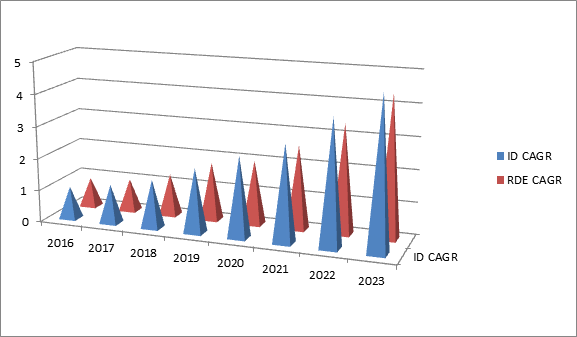
Market value in Nephrology:
In 2016, urinary organ chemical analysis instrumentation accounted for over fifty-fifth of the market value—at over $17 billion—and is predicted to rise to over $26 billion by 2026

According to Global Data’s researchers, almost 60% of renal dialysis patient growth will be driven by the emerging markets of China, Brazil, and India—which will account for 48% of the dialysis population by 2026.
Allotment (in Million Dollars) to Nephrology Research:
StaticFoundation has over $500 million to 605 basic sciences, translational and clinical CHD research These are the find allotted by NIH in various years to Nephrology research department. The Kidney projects at leading research centres across the Malaysia and Canada. The maximum level of funding is $80,000 per year in Malaysia and shall be used principally to support global development as well as training-related expenses. Referrals for those in need of a kidney transplant have more than doubled in the past two years due to these excellent results and the unique expertise of transplant surgeons and physicians.
statics of Physicians, Researchers and Academicians working on Nephrology Research:
The main part of the world associated with Nephrology field are Directors, Heads, Deans, Professors, Scientists, Researchers, Doctors, Students and Writers of Pediatric Nephrology Department as well as Founders and Employees of the connected corporations, Associations members, related organizations, laboratories members etc.
In 2030 number of people receiving dialysis or kidney transplantation set to more than double to over 5 million. In USA each one in three adults is presently in danger for developing excretory organ diseases. The 9th leading cause of deaths in USA is kidney disease. In USA 6 lakh deaths are due to kidney diseases. It is being acknowledged that throughout USA over seventeen,105 kidney transplantations took place in 2014 alone. In 2015, 11,570 came from deceased donors and five,535 came from living donors. Every day twelve individuals die whereas anticipating a life-saving excretory organ transplant. For every fourteen minutes a private is additional to the nephritic transplant list. In 2014, 4,270 patients died due to increasing the lag time for a kidney transplant. Another, 3,617 individuals became too sick to require delivery of excretory organ transplant. Medical Expenditures for individual patient per year with kidney disease increase from $15,000 in stage 3 to $28,000 in stage 4 to more than $ 70,000 in stage 5. Every year, health care spent nearly $ twenty eight.6 billion to treat people with kidney failure. National kidney Foundation has provided more than $100 million for research. Annually North American nation spent $ forty one billion or Revolutionary Organization 17 November of their health care budget on individuals with excretory organ diseases.
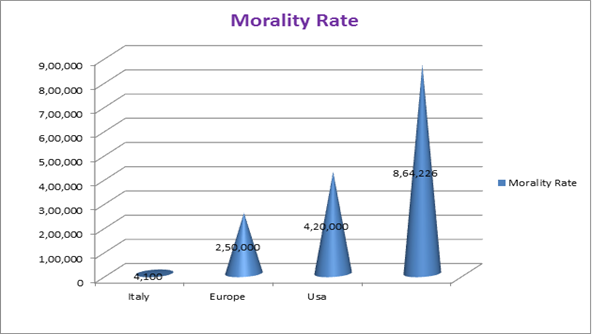
Nephrology scope of practice has undergone profound changes in the past decade. This evolution is largely due to:
.• The prevalence of CKD within the general population is some Bastille Day.
• High square measurea} and polygenic disorder are the most causes of CKD. Almost 1/2 people with CKD even have polygenic disease and/or self-reported disorder (CVD).
• More than 661,000 Americans have kidney failure. Of these, 468,000 people square measure on chemical analysis, and roughly 193,000 live with a functioning kidney transplant.
• uropathy usually has no symptoms in its early stages and might go undiscovered till it's terribly advanced. (For this reason, kidney disease is often referred to as a “silent disease.”)
• The adjusted incidence rate of ESRD within the u. s. rose sharply within the Eighties and Nineties, levelled off in the early 2000’s, and has declined slightly since its peak in 2006.
• Compared to Caucasians, ESRD prevalence is about 3.7 times greater in African Americans, 1.4 times greater in Native Americans, and 1.5 times greater in Asian Americans.
Prevalence:
• the prevalence of CKD inflated from twelve-tone music to Bastille Day between 1988 and 1994 and from 1999 to 2004 however has remained comparatively stable since 2004. The largest increase occurred in individuals with Stage three CKD, from 4.5% to 6.0% since 1999.
• ladies (15.93%) are more likely to have stages 1 to 4 CKD than men (13.52%).
Age-Adjusted Prevalence of CKD Stages 1-4 by Gender 1999-2015
Age-Adjusted Prevalence of CKD Stages 1-4 by Gender 1999-2015
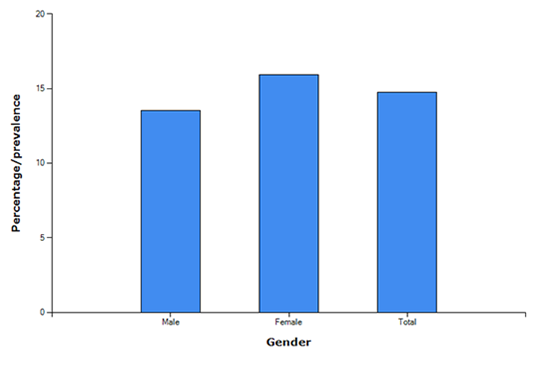
African Americans (17.01%) and Mexican Americans (15.29%) square measure a lot of probably to own CKD than Caucasians (13.99%)
CKD usually happens within the context of multiple comorbidities and has been termed a sickness number. Almost half people with CKD even have polygenic disorder and self-reported CVD.
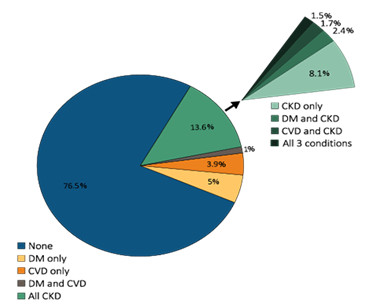
Important and scope of Hypertension:
Hypertension may be a major risk issue for vas diseases, vas events and ischemic heart diseases, thus is thus one in all the foremost vital preventable causes of premature morbidity and mortality in developed and developing countries. It is usually well, thus screening is significant before injury is completed. Many surveys still show that high blood pressure remains underdiagnosed, undertreated and poorly controlled. Overall, the prevalence of hypertension (at least ≥140/90 mm Hg or on treatment) in those aged over 35 was observed to be 32% in men and 27% in women.
A prospective survey of patients in 20th century electrocardiography, preventive cardiology and the Framingham Study, lipid hypotheses and atherosclerosis, coronary care units, thrombolytic therapy, cardiac catheterization and coronary angiography, open-heart surgery, automatic implantable cardiac defibrillators, and coronary angioplasty. In high blood pressure, different changes made to the understand the basic levels of blood pressure and in the development of new diagnostic and therapeutic techniques.
Hypertension Meeting 2018 is a world platform for presenting analysis concerning high blood pressure and connected ideas, sharing alternative ideas about the severe cardiovascular risk factor, contributing to the dissemination of information about the difficulty for the welfare of the society.
Overall Prevalence of Hypertension Globally

Global Market at a Glimpse:
High blood pressure or hypertension is the most important risk factor for cardiovascular disease. In over ninetieth of cases there is also no placeable reason for high blood pressure, during which case the condition is understood as hypertension. The remaining 100 percent of cases, hypertension may be secondary in nature as a consequence of another medical problem, such as kidney disorders, adrenal tumours, or some drugs.
The prevalence of high blood pressure is forecasted to grow from 234 million in 2010 to 246 million in 2016 across the seven major markets (France, Germany, Italy, Spain, UK, US, and Japan). In 2016, the U.S. continues to be expected to be the biggest marketplace for high blood pressure, with an anticipated 83 million sufferers, followed by Japan at 49 million. According to the International Society of high blood pressure, there is a clear recognition of hypertension as a major public health issue across all the 7MM.
The global cardiovascular market recorded a sale of $170bn in the year 2010 and is set to grow to $187bn in 2016 at a CAGR of 1.6%. The U.S. continuing to be the biggest market, with a share of 40% of the overall market. Antihypertensives remained the largest drug class in the year 2010, with a global sale of $37.6bn and a global market share of 22%.
The global marketplace for high blood pressure management devices could be a variable ANd dynamic market which will expertise a robust growth through the year 2023 as an increasing range of devices would become accessible to handle a mostly unmet clinical desires.
Fund Allotment to Hypertension Research:
The NIH (National Institute of Health) Funding Opportunity Announcement (FOA), funded by the Patient-Centered Outcomes Research Institute (PCORI), funds up to two new patient-centred comparative effectiveness clinical trials, with the goal of comparing alternative, evidence-based ways to reduce inadequate control of hypertension and disparities in outcomes among high-risk populations, including racial/ethnic minority groups, patients with low socioeconomic status (SES), and individuals residing in rural geographical areas with AN on top of average period risk of upset (CVD). This initiative is supported by the Hypertension Disparities Reduction Program Partnership (HDRPP), a research partnership between NHLBI, NINDS and PCORI, with funds provided by PCORI to the NIH.
The fund allotment granted by the NIH is raised up to $21,500,000 worldwide for supporting research works associated with the advances in treatment and management of Hypertension.
Statistics of Physicians, Researchers, and Academicians working on Hypertension:
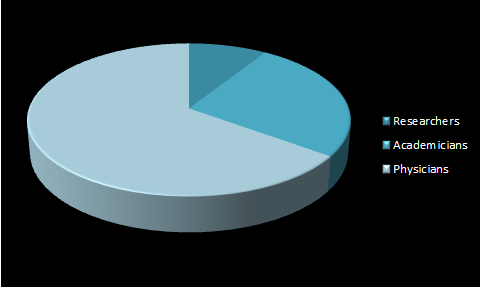
Why Istanbul?
Istanbul, which is the capital of the Turkey, Ä°stanbul, anciently known as Byzantium and Constantinople, among all cities in turkey it is densely populated because of this it is USA's economic, cultural and historical centre.
Istanbul is a transcontinental town in Eurasia, straddling the Bosporus Strait (which separates Europe and Asia) among the ocean of Marmara and the Black Sea. Its commercial and ancient centre lies on the ECU facet and about a 3rd of its populace lives in suburbs at the Asian side of the Bosporus. With a complete populace of around 15 million residents in its metropolitan vicinity, Istanbul is one of the global's maximum populous cities, ranking as the sector's fourth biggest town right and the most important EU town. The city is the executive centre of the Istanbul Metropolitan Municipality (coterminous with Istanbul Province)
Conference Highlights
- Clinical Nephrology
- Renal Hypertension
- Hypertension and Transplantation Medicine
- Hypertension With Diabetic Kidney Disease
- Biomarkers in Kidney and Heart disease
- Pediatric Nephrology & Hypertension
- Nephrology Nursing
- Haemodialysis
- Management of Hypertension
- Renal Transplantation
- Diet and lifestyle in Hypertension Management
- Experimental Nephrology
- Clinical Trials and Case Reports
- Glomerulonephritis
- Lupus Nephritis
- End-Stage Renal Disease
- Acute Kidney Injury
- Renal Nutrition & Metabolism
- Urology
To share your views and research, please click here to register for the Conference.
To Collaborate Scientific Professionals around the World
| Conference Date | Novmber 11-12,2019 | ||
| Sponsors & Exhibitors |
|
||
| Speaker Opportunity Closed | Day 1 | Day 2 | |
| Poster Opportunity Closed | Click Here to View | ||
Useful Links
Special Issues
All accepted abstracts will be published in respective Our International Journals.
- Journal of Nephrology & Therapeutics
- Journal of Hypertension: Open Access
- Journal of Clinical & Experimental Nephrology
Abstracts will be provided with Digital Object Identifier by



